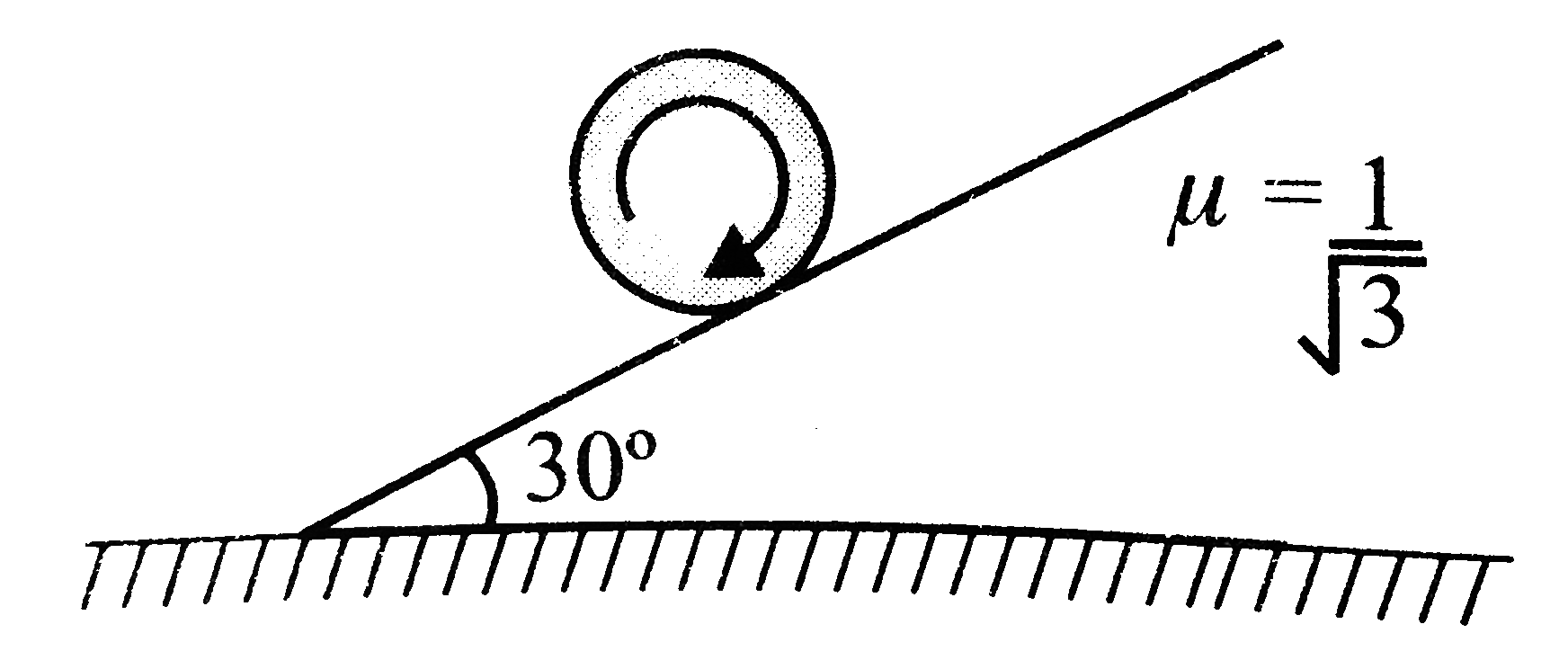A disc rotates about its axis with a constant angular acceleration of 4rads2. Find the radial and tangential acceleration of a particle at a distance of 1 cm from the axis at the end of the first second after the disc starts rotating.
The correct Answer is:A, B, C, D
t=1sec,r=1cm=0.01m
1alpha=4rad/s^2<br>thereomega=alphast=4rad/s<br>threforeradialae≤ration<br>a_n=omega^2r=(4)^2xx0.01<br>=0.16m/s^2=16m/s^2<br>Thereforetan≥ntialae≤ration<br>a_T=alphar=0.04m/s^2<br>=4cm/s^2
Topper's Solved these Questions
- BOOK - HC VERMA ENGLISHCHAPTER - ROTATIONAL MECHANICSEXERCISE - Questions for short Answer21videos
ROTATIONAL MECHANICS
- BOOK - HC VERMA ENGLISHCHAPTER - ROTATIONAL MECHANICSEXERCISE - Objective -214videos
ROTATIONAL MECHANICS
- BOOK - HC VERMA ENGLISHCHAPTER - REST AND MOTION : KINEMATICSEXERCISE - Question for short Answer13videos
REST AND MOTION : KINEMATICS
- BOOK - HC VERMA ENGLISHCHAPTER - SIMPLE HARMONIC MOTIONEXERCISE - Question for short Answer15videos
SIMPLE HARMONIC MOTION
Similar Questions
A particle starts moving with a constant angular acceleration in a circular path. The time at which the magnitudes of tangential and radial acceleration are equal is
View SolutionA particle starts moving with a constant angular acceleration in a circular path. The time at which the magnitudes of tangential and radial acceleration are equal is
View SolutionA disc is rotated about its axis with a certain angular velocity and lowered gently on a rough inclined plane as shown in Fig., then
 View Solution
View SolutionA disc is rotated about its axis with a certain angular velocity and lowered gently on a rough inclined plane as shown in Fig., then
 View Solution
View SolutionA particle is rotating about a fixed axis with angular acceleration →α=ˆi+2ˆj+3ˆk rad/s2. Find the tangential acceleration of a point having radius vector (2ˆi−3ˆj+ˆk)m from axis of rotation in (in m/s2)
View SolutionA disc starts rotating with a constant angular acceleration of 1rad/s2 about a fixed vertical axis perpendicular to its plane and passing through its centre. A coin of mass 10gm is placed on the disc at a distance of 10cm from the axis. The coefficent of friction between the disc and the coin is 0.2. The value of the frictional force on the coin at t=1s will be
View SolutionA body rotates about a fixed axis with an angular acceleration of 3rad/s2 . The angle rotated by it during the time when its angular velocity increases frm 10 rad/s to 20 rad/s (in radian) is
View SolutionA disc of radius R rotates from rest about a vertical axis with a constant angular acceleration such that a coin placed with a tangenitial between a as shown in figure If the coefficient of static friction between the coin and disc is μs .Find the velocity of the before it start sliding relative as the disc
 View Solution
View SolutionA disc of radius R rotates from rest about a vertical axis with a constant angular acceleration such that a coin placed with a tangenitial between a as shown in figure If the coefficient of static friction between the coin and disc is μs .Find the velocity of the before it start sliding relative as the disc
 View Solution
View SolutionThe linear and angular acceleration of a particle are 10 m/sec2 and 5 rad/sec2 respectively it will be at a distance from the axis of rotation -
View Solution

